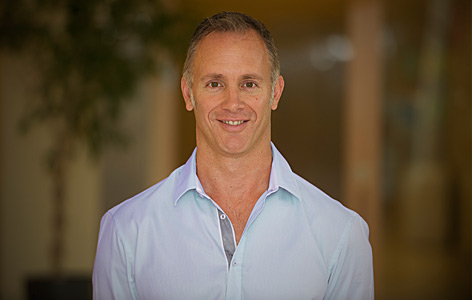Home page Description:
How to enhance donations for medical education research.
Posted On: February 22, 2017

By Shaalee Dworski, ORT Times Writer and UHN Trainee
Grant funding is the lifeblood of researchers; yet, the traditional funding schema of relying on grants from government agencies, such as the Canadian Institutes of Health Research (CIHR), is becoming increasingly dismal. In 2016, the success rate for receiving a CIHR Foundation or Project Grant was a mere 13%.
As the granting environment becomes increasingly competitive, researchers are turning to an alternate source of funding: private donations. Established, blockbuster fundraisers can raise large amounts of funding for certain research fields, like breast cancer and prostate cancer; however, other fields like medical education research are in their infancy in their efforts to attract donors. Researchers in this field are not accustomed to interacting with philanthropists and securing donations.
Robert Paul, a PhD student in Dr. Tina Martimianakis’ laboratory, and colleagues initiated a qualitative research study to empower medical education researchers with the knowledge they need to successfully gain philanthropic funding. In the study, they identified the stages of the fund-raising cycle and key characteristics of medical education research that helped attract philanthropic funding. They found that one important factor in successfully acquiring donations is that the researchers know what role they play in the funding cycle; whether they are trailblazers, rock stars or unexpected participants, researchers benefitted from knowing how they can help build the case for their cause.
Success also required support from the organization’s leadership and a formal body to manage donations: there needed to be someone—whether from the institution or a researcher—who actively engaged with donors and advocated the importance of funding medical education research.
Finally, medical education researchers could benefit from educational development or formal training in the skills required to successfully solicit donor funding. This is especially true for those in the medical education field, in which fundraising is a relatively new concept.
Although this study focused on researchers in medical education, it identified skills and characteristics that can be applied to researchers from any field. As we enter a new technological age, the public has more direct access and a greater ability to support causes that it favours. We must all learn to relate to individual donors and create public campaigns to help fund our research.
The original article is available here.
The ORT Times spoke with the study’s first author, Robert Paul:
Q: Could this information be used to create a short course for medical education researchers on how to better interact with philanthropists?
A: Yes; actually, we are in the process of developing such a course. While details are still being worked out, the working name of the course is “Funding Camp”. I am seeing philanthropic skills as a new ‘competency’, to use the language of CanMEDS, and that education is needed.
Q: Although your study included international instances of philanthropic funding, the focus was on those in Canada. Is Canada different from other countries in its ability or need for philanthropic funding?
A: Canada is quite different from many of the countries we examined: it has a long history of philanthropy and developing public policy that encourages philanthropy. Researchers need to understand this and to learn how to engage with donors to benefit from it.
Grant funding is the lifeblood of researchers; yet, the traditional funding schema of relying on grants from government agencies, such as the Canadian Institutes of Health Research (CIHR), is becoming increasingly dismal. In 2016, the success rate for receiving a CIHR Foundation or Project Grant was a mere 13%.
As the granting environment becomes increasingly competitive, researchers are turning to an alternate source of funding: private donations. Established, blockbuster fundraisers can raise large amounts of funding for certain research fields, like breast cancer and prostate cancer; however, other fields like medical education research are in their infancy in their efforts to attract donors. Researchers in this field are not accustomed to interacting with philanthropists and securing donations.
Robert Paul, a PhD student in Dr. Tina Martimianakis’ laboratory, and colleagues initiated a qualitative research study to empower medical education researchers with the knowledge they need to successfully gain philanthropic funding. In the study, they identified the stages of the fund-raising cycle and key characteristics of medical education research that helped attract philanthropic funding. They found that one important factor in successfully acquiring donations is that the researchers know what role they play in the funding cycle; whether they are trailblazers, rock stars or unexpected participants, researchers benefitted from knowing how they can help build the case for their cause.
Success also required support from the organization’s leadership and a formal body to manage donations: there needed to be someone—whether from the institution or a researcher—who actively engaged with donors and advocated the importance of funding medical education research.
Finally, medical education researchers could benefit from educational development or formal training in the skills required to successfully solicit donor funding. This is especially true for those in the medical education field, in which fundraising is a relatively new concept.
Although this study focused on researchers in medical education, it identified skills and characteristics that can be applied to researchers from any field. As we enter a new technological age, the public has more direct access and a greater ability to support causes that it favours. We must all learn to relate to individual donors and create public campaigns to help fund our research.
The original article is available here.
The ORT Times spoke with the study’s first author, Robert Paul:
Q: Could this information be used to create a short course for medical education researchers on how to better interact with philanthropists?
A: Yes; actually, we are in the process of developing such a course. While details are still being worked out, the working name of the course is “Funding Camp”. I am seeing philanthropic skills as a new ‘competency’, to use the language of CanMEDS, and that education is needed.
Q: Although your study included international instances of philanthropic funding, the focus was on those in Canada. Is Canada different from other countries in its ability or need for philanthropic funding?
A: Canada is quite different from many of the countries we examined: it has a long history of philanthropy and developing public policy that encourages philanthropy. Researchers need to understand this and to learn how to engage with donors to benefit from it.

Robert Paul, first author and UHN trainee.
Photo Cred: Cameron MacLennan




